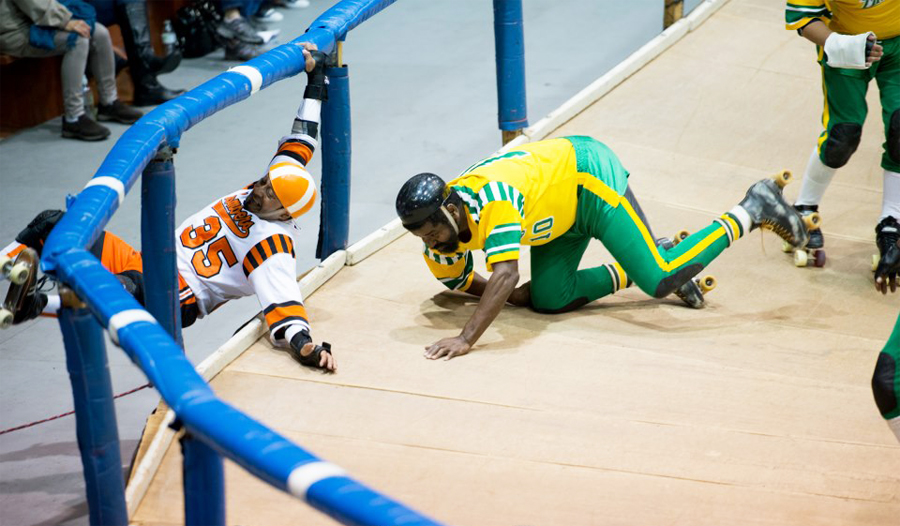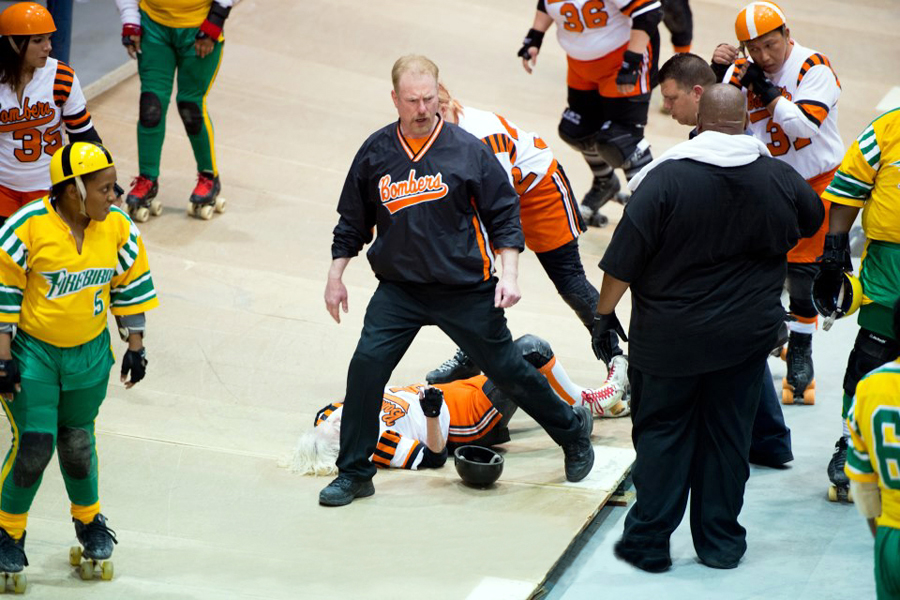Skating Mid-century Nostalgia
 |
|
|
 |
|
|
 |
|
|
Jim Fitzpatrick is old-school roller derby, with his roots in the 1960s when the sport was riding high. Now he's part of a modern resurgence and is bringing his team, the San Francisco Bay Bombers, to Alameda on May 9.
You'll see the 'jammers' breaking out of the pack, skating hard as they score points by passing their opponents and avoiding the heavier set 'blockers.' The Bombers are facing the Brooklyn Red Devils.
The match will be at the Alameda Point Gym in Alameda. Matches sell out so advanced tickets are suggested. Click here for more details and tickets.
These are professional athletes, members of the league American Roller Skating Derby. Fitzpatrick is the Bay Bombers General Manager, a former skater who retired from the sport after an injury.
These days, Fitzpatrick says, he's having the time of his life with the team and promises a fun and inexpensive evening for all, with the top VIP tickets going for all of $25.
Men's teams compete versus men's teams, and women versus women.
"I love the speed, I love the action, the hard skating," Fitzpatrick says of roller derby, which the league plays on a banked track. "I want to see my team win on skating skills. I like to see teams go out there and skate their hearts out, a fast skating game, and avoiding the fighting."
"It's an intimate thing. The seats are close to the track and you can go up to the players," he says. "It's very fan friendly."
Among the skaters you can meet will be Lali-O, a few years back the winner of the league's 'Roller Derby Queen' title, awarded both for her skill and her looks.
"Today, roller derby is on an upswing," Fitzpatrick says. "But it's weird. Roller derby started back during the Depression. Since then it's had its peaks and valleys. The last really high peak was in the late '60s, '70s, during the Vietnam war. It seems like in bad economic times or times of real conflict, people want an outlet."
He remembers the not-so-good old days, in the 1980s and 1990s, when roller derby became a bit of a joke. "There were bizarre concepts that hurt roller derby's reputation," he says, mentioning one which included an alligator pit as a kind of water hazard. "It wasn't roller derby. It was everything else plus the kitchen sink thrown in."
Fitzpatrick appreciates that roller derby attracts a wider range of athletes than other sports.
"Here you have the women out there, you have the men out there. You have a small person skating, people who would be too small for football. You have heavy people. There's so much more variety, but the people who have the skills are out there," he says.
"If you have the skating skills, it doesn't matter—all different shapes and sizes—guys, girls, you have a chance."




